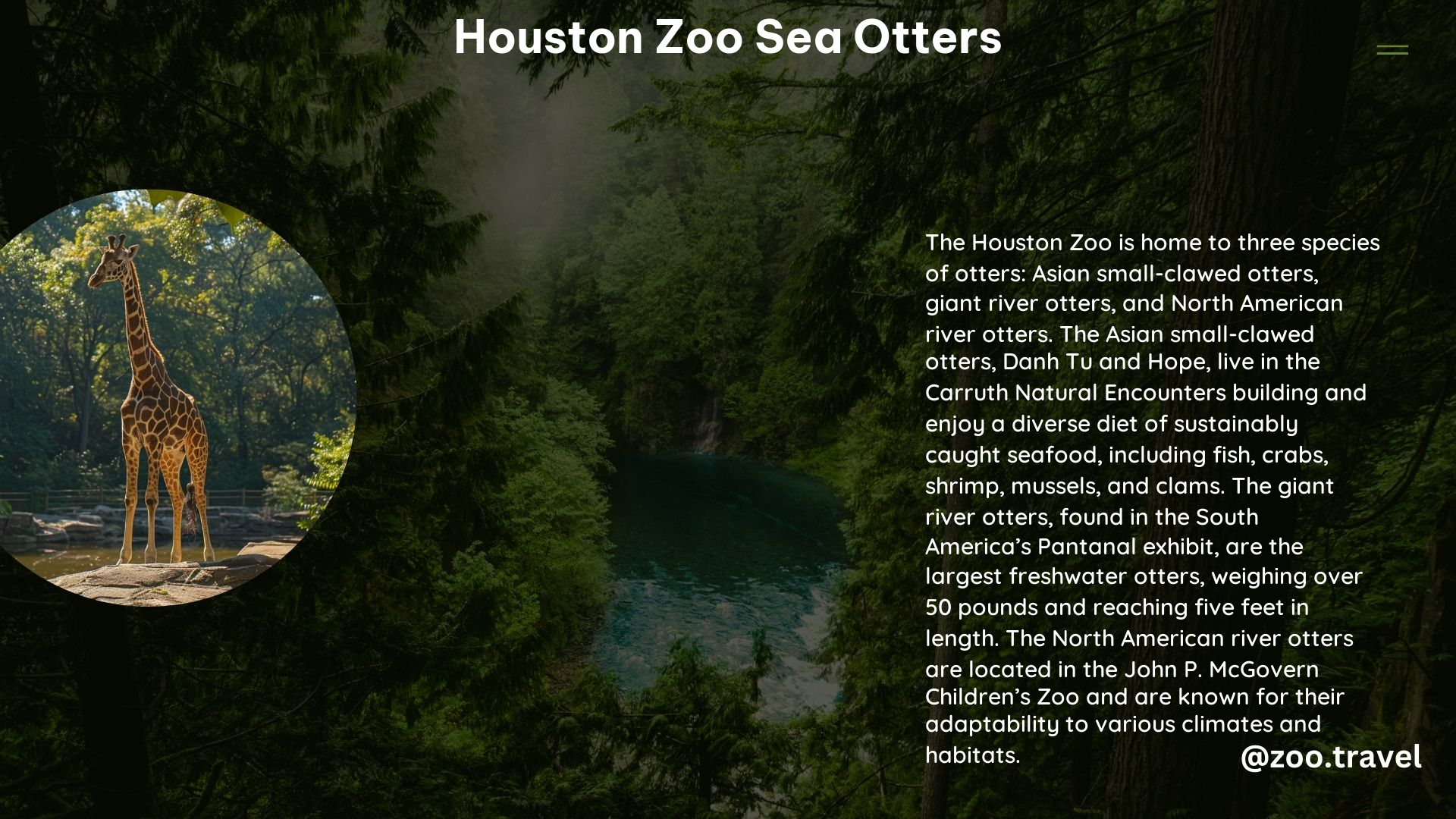The Houston Zoo is home to a diverse array of otter species, each with its own unique characteristics and behaviors. From the playful North American River Otter to the dexterous Asian Small-Clawed Otter and the impressive Giant River Otter, these aquatic mammals captivate visitors with their endearing antics and remarkable adaptations.
North American River Otter
The North American River Otter, scientifically known as Lontra canadensis, is a common sight at the Houston Zoo’s John P. McGovern Children’s Zoo. These charismatic creatures are found throughout North America, Canada, and Alaska, thriving in rivers, lakes, ponds, and marshes. One of the coolest facts about these otters is their preference for unpolluted water and their tendency to live in the same areas as beavers, often taking advantage of abandoned beaver dams for resting and raising their young.
Asian Small-Clawed Otter

In the Carruth Natural Encounters area of the Houston Zoo, visitors can observe the captivating Asian Small-Clawed Otter, scientifically known as Aonyx cinerea. These otters are native to southern India, the Malay Peninsula, and southern China. What sets them apart is their remarkable paw dexterity, which they use with human-like proficiency to hunt and eat their primary prey, including silverside fish, capelin, crabs, shrimp, mussels, and clams. Additionally, these otters are known to form monogamous pairings for life, with the males assisting in nest-building and food gathering after the birth of their young.
Giant River Otter
The Houston Zoo’s South America’s Pantanal exhibit is home to the impressive Giant River Otter, scientifically known as Pteronura brasiliensis. These otters are found in the Amazon basin, including Brazil, Bolivia, Colombia, Ecuador, Guyana, Venezuela, and Peru. One of the most fascinating facts about Giant River Otters is that they are not born knowing how to swim; instead, their parents teach them this essential skill. These otters primarily feed on fish and often hunt in family groups, showcasing their impressive teamwork and hunting prowess.
Diet and Feeding
The Houston Zoo’s otters have diverse dietary needs, reflecting their natural habitats and adaptations. The North American River Otters likely feed on a variety of fish and other aquatic animals, while the Asian Small-Clawed Otters have a more specialized diet, including silverside fish, capelin, crabs, shrimp, mussels, and clams. The Giant River Otters, on the other hand, are primarily piscivorous, feeding mainly on fish.
One unique feeding feature of the Asian Small-Clawed Otters is their remarkable paw dexterity, which they use with human-like proficiency to hunt and consume their prey.
Conservation Efforts
The Houston Zoo is committed to supporting conservation efforts for these otter species. The zoo is single-use plastic straw, bag, and bottle-free, preventing 400,000 pieces of single-use plastics from entering bayous, lakes, and oceans each year. Additionally, the zoo supports conservation partners like Projecto Ariranhas, which promotes sustainable ecotourism practices to protect the Giant River Otter and its habitat.
Visitor Information
The Houston Zoo offers visitors a unique opportunity to observe these fascinating otter species up close. While the specific cost, timings, and rates are not provided, the zoo’s commitment to conservation and the opportunity to see these captivating animals make it a valuable experience for visitors.
